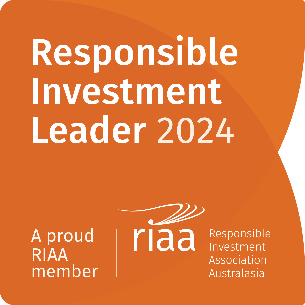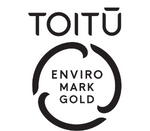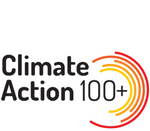A world in recovery

7th July 2021: As we rule off another quarter, the experience for equity investors remains a positive one. The US S&P500 Index closed on June 30 at a record high, having rallied more than 8% since March. Closer to home the returns have also been good, albeit recently it has been the Australian market which has been more productive than New Zealand. Over the past 3-months the S&P/ASX200 closed up 8.3%, whilst the S&P/NZX50 Index only managed to grind out an 0.8% return. Critical to the tone for equities has and continues to be a number of important macro drivers. As described below, COVID remains relevant although, at this stage, the newer variants are unlikely to have major repercussions for developed markets given the success of vaccination programs and the efficacy of vaccines. The other major concern remains inflation and its implications for policy settings. We make some observations on this below also.
When we examine recent economic data points from around the world, the positive momentum is clear and very robust. Mobility trends are improving, and confidence levels have substantially progressed (in fact, during June US consumer confidence hit its highest level since pre-pandemic February 2020). As the US and Europe continue to reopen, global GDP is now expected to grow this year at almost 6%. Rarely do we see such growth synchronicity across the major regions but key to this is the US, where activity levels are today being compared to both the glory-days of the 1980’s and the rise of China. Key to this growth in western economies has been the successful deployment of COVID vaccinations. In the US almost 50% of their population is fully vaccinated whilst in countries such as England and Germany, the numbers are at 49% and 36% respectively. These numbers tend to understate the impact of the vaccines as amongst higher risk group the vaccination percentages are much higher. For instance, one very powerful statistic is that in the USA less than 2% of Covid deaths now are amongst people who have been vaccinated. Although the Delta variant is considered to be more virulent than what we have seen in previous waves of infection, the impact of vaccinations has essentially broken the cycle between case, hospitalisations and fatalities. Recent hospital admission rates in the UK are, for example, at a level today of 16-per-1000 new cases, whereas in January this year the ratio was five times higher at 84-per-1000 cases.

Source: IMF World Economic Database & Devon Funds Analysis
Source: Our World in Data & Devon Funds Analysis
As we have seen over the past month though, the experience in our corner of the world is very different. In late June, Australia essentially placed almost 12 million people into lockdown as their state governments navigated the risks of major COVID community transfer. In New Zealand, we also collectively held our breath, waiting for test results to confirm whether or not a Trans-Tasman visitor had introduced the Delta variant into an ill-prepared community in Wellington, whilst strolling through the Te Papa museum. The key here, again, is vaccinations. In New Zealand only 7.9% of our population have received two-doses of the Pfizer vaccine whilst in Australia this number sits at a mere 4.7% (a combination of both the AstraZeneca and Pfizer vaccines). Despite enjoying very positive outcomes over the past 15-months with respect to infections and deaths, we now reside at the bottom of the global list with our immunisation programmes. When looking at the share of population that have received all doses prescribed by the vaccination protocol on an OECD basis, New Zealand is second-to-last, ahead of only Australia.
The implications on economic activity from this level of vulnerability are real, but investors have learnt important lessons from their experiences over the past 15-months. The likely impact on economies, and the value of most companies, will largely be transitory. As we can see from the progress towards normality in countries such as the US or the UK, the determination by communities to return to a normal state of living is strong. This coupled with the ongoing effect of record levels of fiscal stimulus and easy credit should create a platform of confidence for businesses and investors when they look beyond reactive measures targeted at limiting mobility (and ultimately the risks surrounding COVID transmission). The resilient performance of local equity markets over the past few weeks is testimony to this.
The super-charged capital gains that investors enjoyed last year are unlikely to repeat themselves over the next 12-months, but the likelihood of an ongoing positive experience is being well supported by corporate earnings. After record levels of profit growth being achieved in the year-to-March 2021, the momentum continues. Earnings-per-share (EPS) growth for 2022 is now forecast at 12% for the US S&P500 and almost 15% for Europe’s Euro Stoxx Index. Historically investors have become accustomed to consensus forecasts being downgraded as each year progresses, but the strength of the economic recovery that is playing out this year is sponsoring a different, and more positive, outcome (the bottom-up consensus is currently predicting MSCI World EPS growth of 39% for 2021, which has improved from earlier expectations of 26%). For local context, in Australia, the earnings growth phase which began in December last year for the S&P/ASX200 has seen earnings upgrades of more than 10%. History provides an interesting lesson – traditionally this phase of the upgrade cycle has lasted for five years and during this time company earnings have typically grown by 150%.
As highlighted earlier, the topic receiving the most attention across markets at the moment is inflation. The question is whether or not the recent elevated levels of inflation being reported are transitory in nature or are they the beginning of a more sustained lift in prices. The former argument is one which central banks have been pushing and is fundamental to their ongoing commitment to easy monetary conditions. The outcome of this debate will ultimately determine where interest rates go over the next 6-24 months. At the Federal Reserve’s most recent meeting on June 16, there was a hawkish shift in the tone of their comments as they brought forward the date of the expected first interest rate hike to 2023 (although it is worth noting that 7 of the 18 Federal Reserve members did actually signal a belief that a rate hike in 2022 may be warranted). Despite this repositioning by the central bank, longer-dated interest rates ultimately fell which can be explained in a number of ways. One of which is the possibility that the bond market does not believe that inflation is a long-term problem. Another is simply that the Fed has continued to buy US Treasury bonds through their quantitative easing program at a rate in excess of supply.
We are currently cautiously optimistic that despite the probability of inflation numbers being reported at an elevated level over the next few months, due in large part to the low level of prices that were evident 12-months ago during the COVID crisis, that as we progress through this year, inflation will not be a major headwind for policy makers or the market. This would allow central banks the flexibility to slowly begin a process of policy normalisation. If this view is not right and it becomes evident that the Fed (and other central banks) are making a policy mistake, then we would expect a lift in market volatility and credible downside risk to prices. This is not our central case, but it will remain a key focus for us at Devon and investors globally.
Over the medium term we believe we remain in a lower interest rate environment (albeit at above current levels) due to the ongoing disinflationary impacts of technology, capital and global labour pools. Global debt levels are also so high now, at both a government and personal level, that significantly higher interest rates are simply not sustainable.





